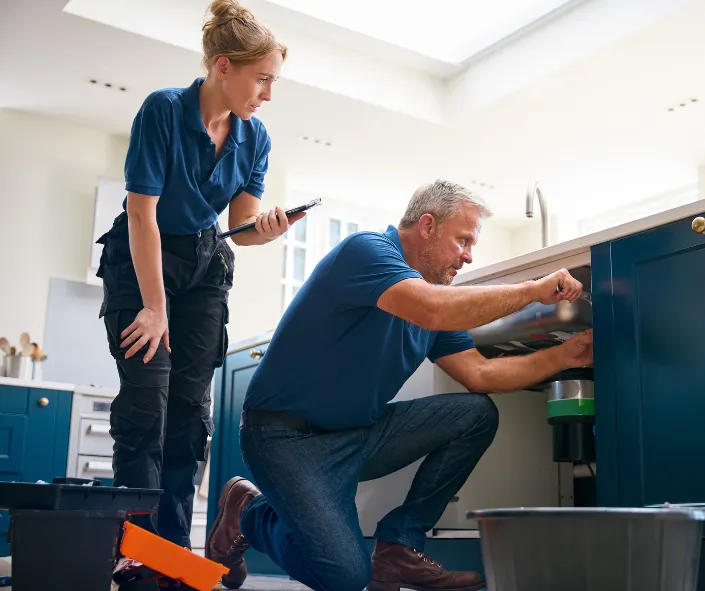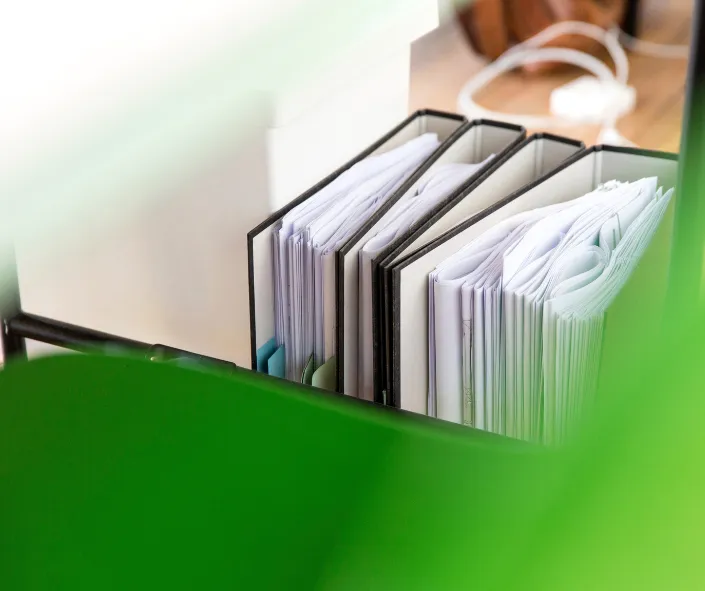Imagine your upstairs pipe bursts. Water’s pouring through the ceiling. You’re scrambling to find the number for the plumber—was it in your phone? A receipt somewhere? And when you finally get it fixed, you realize you can’t find the warranty paperwork for the brand-new washer you just installed.
Moments like this are when a home binder becomes your most underrated tool.
A home binder is a centralized place to keep the critical records, receipts, and resources you’ll need throughout your time as a homeowner. It’s part emergency kit, part homeowner’s archive. It doesn’t just save time in urgent moments; it helps you plan smarter upgrades, stay organized year after year, and sell your home faster.
Here’s what to include and when these documents are typically acquired and needed.
Section 1: Key Contacts & Services
Why it matters:
You don’t want to be Googling “emergency plumber near me” at 3 a.m. Having pre-vetted service providers on hand means you’ll act quickly and confidently when problems arise. Plus, you’re not always the one at home; having these contacts readily available means anyone in the household can access them and take action if needed.
You don’t want to be Googling “emergency plumber near me” at 3 a.m. Having pre‑vetted service providers on hand means you’ll act quickly and confidently when problems arise. Additionally, you’re not always at home—having these contacts readily available means anyone in the household can access them and take action if needed. When disaster strikes, time is your greatest asset—just an inch of water can rack up $25,000 in damage if not addressed quickly (Insurify). Whether it’s water, fire, or structural damage, having the right contact at the right time can mean the difference between a quick fix and a catastrophic loss.
When you acquire it:
- Usually gathered over time as you work with contractors or get referrals from neighbors
- Start by asking your real estate agent or inspector for recommendations after moving in
What to include:
- Electrician, plumber, HVAC technician, and general handyman
- Insurance provider and your policy number
- HOA or building management contacts
- Emergency services like poison control or non-emergency police
When you’ll use it:
- When something breaks or stops working
- During an emergency
- When making routine maintenance appointments (e.g. HVAC cleaning)
Section 2: Warranties, Manuals & Receipts
Why it matters:
That mysterious beeping sound coming from the dishwasher? You’ll want the manual. And when something breaks within its warranty window, having proof of purchase can save you hundreds.
When you acquire it:
- Right after purchasing appliances, electronics, or doing renovations
- Often handed over at closing or after installation of new systems
What to include:
- Appliance manuals and model/serial numbers
- Receipts for major purchases or installations
- Warranty documents (mark expiration dates)
When you’ll use it:
- Troubleshooting an appliance issue
- Filing a warranty claim
- Scheduling repairs or replacements

Section 3: Maintenance & Upgrades Log
Why it matters:
Future-you will be incredibly thankful to know when the furnace was last serviced or what paint color you used in the guest room. A clear maintenance log not only prevents repeat issues, it also saves hours of time spent retracing steps, digging through emails, or guessing what work was done when. And when it’s time to sell, a well-documented history adds significant value by showing buyers that the home has been well-maintained.
When you acquire it:
- As you complete projects, repairs, or schedule seasonal maintenance
- After contractor visits or DIY improvements
What to include:
- Dates of service or repairs
- Contractor details and project scope
- Before/after photos of renovations
- Seasonal checklists: gutter cleaning, HVAC servicing, chimney inspection
When you’ll use it:
- To plan upcoming maintenance
- When hiring new contractors or handymen
- During a home sale, to show buyers well-documented care
Section 4: Home Inventory
Why it matters:
If your home is ever damaged or burglarized, a detailed inventory is critical for filing an insurance claim. It’s also helpful when assessing what needs to be updated or replaced.
When you acquire it:
- Slowly over time, but ideally done right after move-in or after a big purchase
- Can be built as part of an annual “home audit”
What to include:
- Room-by-room inventory of valuable items
- Photos or a video walkthrough
- Receipts, serial numbers, and appraisals (especially for art, jewelry, electronics)
When you’ll use it:
- Filing an insurance claim
- Updating your coverage
- Donating or replacing furniture
- Estimating the value of belongings for tax purposes
Section 5: Property Documents
Why it matters:
Keeping official records at your fingertips can speed up refinancing, make tax time less stressful, and impress buyers when it’s time to sell.
When you acquire it:
- During your home purchase closing
- After renovations or inspections
- During interactions with your city or county (e.g., permits, zoning)
What to include:
- Deed, title, and mortgage information
- Closing disclosures and purchase agreements
- Property tax statements and insurance info
- Permits, surveys, dimensions, or architectural plans
- Notes from your home inspection
When you’ll use it:
- When refinancing your mortgage
- During a property tax appeal
- For estate planning or selling the home
- To understand property lines or add on to your home

Bonus: Digital vs. Physical?
Some homeowners prefer a physical binder on their bookshelf, while others opt for digital solutions that can be accessed anywhere. Platforms like HouseFacts can digitize, organize, and remind you of important tasks—all while keeping your documents safe and searchable. You can even upload a quick video walkthrough of your home, and our AI will automatically parse the footage to create a detailed inventory for you within minutes.
Learn how How Going Paperless Protects Your Property
Final Thoughts
Don’t worry about creating a perfect binder on day one. Start small and build it as you go. You’ll need this information eventually—and when you do, you’ll be glad it’s ready instead of buried.




